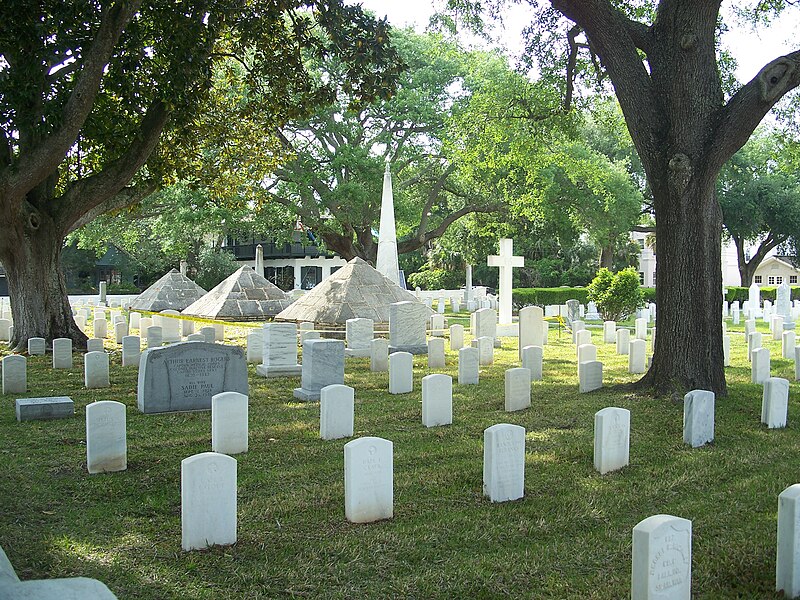Maj. Dade was marching with 7 officers and 110 men. Maj. Dade was on a horse. The indian surprise attack started after Chief Micanopy fired the first shot, which killed Maj. Dade. Only 3 soldiers survived the massacre, barely. There were 180 indians. The battle lasted several hours. Only 3 indians were killed. General Edmund P. Gaines and 1100 men reached the Dade Massacre battlefield two months later (!!!!) on February 20, 1836-the first U.S. soldiers to do so. They identified the bodies for burial and buried them at the site.
The Second Seminole War did not end until 1842. The remains were then disinterred and buried in St. Augustine National Cemetery under the 3 coquina stone pyramids along with over 1,300 other soldiers who died in the war.
(Also, as a footnote, "the grave of Margaret Worth is in the cemetery. She is the widow of Maj. Gen. William Jenkins Worth, a hero of the Second Seminole War and the Mexican-American War. Fort Worth, TX; Lake Worth, FL; and Palm Beach's Worth Avenue are named for him.)
Thank you to Wikipedia and to The Philadelphia Article, Sunday, January 13, 2013, Page N1, Travel, "In St. Augustine's shadows" by Roberta Sandler.

No comments:
Post a Comment